
webmaster
© Copyright DEHAI-Eritrea OnLine, 1993-2010
All rights reserved
From: Berhane Habtemariam (Berhane.Habtemariam@gmx.de)
Date: Fri Oct 15 2010 - 06:20:39 EDT
"New Geography" - An Underexplored Salt Province
OilEdge
A thirty year independence struggle with
<http://eastafro.com/Post/2010/10/14/eritrea-highly-prospective-for-oil-and-
gas/> Ethiopia means that the natural resources of Eritrea remain largely
untapped, but there is ample evidence that this now peaceful country is
highly prospective for oil and gas.
By Jane Whaley , OilEdge
15/10/2010
Like many of us, when Eritrea was first mentioned to Alec Robinson, he
reached for the atlas. "It's not the first place that springs to mind when
thinking of African hydrocarbon exploration," the CEO of Centric Energy
admits. "But that's the point. It's one of the few relatively unexplored
places left in the world - and it has great potential. The Eritrean Red Sea
has all the classic features of pre- and post-rift sedimentation, including
syn-rift evaporites, as well as a known oil-rich source, and sediment feeder
channels leading to prospects in less than 50m of water. There are also oil
seeps on the islands of the Dahlak archipelago, and along the coast."
"In addition to all the positive geological indicators," Alec adds, "it is
now one of the safest and most peaceful places to work in Africa. The
government has made great efforts to encourage oil companies to the country.
The geology of Eritrea is dominated by metamorphosed Precambrian rocks,
which were deformed by the pan-African orogeny, and then further altered by
the intrusion of Lower Palaeozoic granites. As a result, the country abounds
in minerals such as gold, copper, and zinc, but most of the areas
prospective for hydrocarbons are found offshore.
". one of the safest and most peaceful places in Africa"
Massive gas blow-out
Eritrea lies at the southern end of the Red Sea, which was formed in
Oligo-Miocene times (36 - 20 million years ago) as the African land mass
broke away from the Arabian shield. Pre-rift arching and break-up of the
continental crust led to the formation of the Red Sea, with block faulting
on the flanks and strong subsidence in the central part, both very important
for the formation of hydrocarbon traps. As rifting continued, fluviatile and
lacustrine sedimentation was followed by shallow marine clastics and, with
circulation in the Red Sea diminishing, the deposition of evaporites.
Rifting through the late Miocene was accompanied by horst-graben faulting
and fault block rotation, until by the Early Pliocene, about 5 Ma ago, small
pull-apart basins along the axis of the Red Sea and Gulf of Aden were
developing oceanic crust. These eventually coalesced to form the passive
margins found today lying on the edge of the deep water trough of the
central Red Sea, which drops rapidly to over 2,000m.
Alec and his colleagues at Centric believe that these sediments could hold
large quantities of hydrocarbons. "Although exploration started back in
1921, only eleven wells have ever been drilled in Eritrean waters, with a
further 12 shallow holes back in the 1940's on offshore islands. Eight of
the offshore wells had good oil or gas shows, and the widespread occurrence
of seeps is further evidence of a working petroleum system."
"In fact one well, C1, drilled in 1969 by Mobil, suffered a massive gas
blow-out, and continued flowing for 55 days before finally stopping
naturally. From the limited and varying quality data available, a number of
prospects and leads have been identified in both the pre- and sub-salt
formations of the Eritrean Red Sea," Alec says.
Pre-and post-salt plays
As with other classic rifts, there are two distinct play types, separated by
the syn-rift evaporites. "A number of promising source horizons have been
identified, both above and below the salt," Alec explains. "There are Late
Jurassic organic-rich shales and marls, as well as several promising source
horizons in the syn-rift, with TOCs ranging from 3% - 8%. The most recent
wells, drilled by Anadarko in 1998, also found potential source shales in
the post-rift Desset Formation.
Most of the exploration to date has centred on the post-salt plays, and
initially Centric Energy will be concentrating on these, although Alec
believes that the syn- and pre-rift plays are also very prospective. "To
date, all the seismic shot has been 2D, which has not effectively imaged the
pre-salt. Modern 3D seismic is required in order to clearly delineate the
sub salt horizons," Alec says.
Post-rift reservoirs include Neogene lenticular sandstones and reefal
limestones, with hydrocarbons trapped in structures formed by salt
tectonics, including turtle backs, rollover anticlines, fault detachments
and drapes over salt diapirs. "We believe there are also interesting
stratigraphic traps, like deepwater ponded turbidites and channel sands,
which have not been investigated yet by the drill bit."
"The syn-rift sediments, just below the salt, are also promising - in fact,
the major blow-out in well C1 occurred just as the drilling reached this
point," Alec continues. "While the Late Miocene formation is predominantly
evaporitic in the areas drilled so far, it includes marginal fluvial,
aeolian and beach sandstones, which may form thicker horizons as they extend
into the basin. And, of course, with all that salt, along with proven shale
intervals, seal is not expected to be a problem."
Further potential is offered by the pre-rift, pre-salt horizons, which are
completely unexplored, although they can be visually checked at outcrop
along the coast. Plays are expected to include rotated fault blocks and
horsts, particularly in the less eroded downdip areas, with potential
reservoirs including Mesozoic fluvio-deltaic to shallow marine clastic
sequences and dolomitised limestones, and Paleozoic fluvio-glacial
sandstones.
"A number of promising source horizons have been identified"
Why so little exploration?
Centric Energy is finalizing the terms of a Production Sharing Contract for
an offshore block and has been given exclusivity while finding a partner. At
the moment, it is the only oil company active in Eritrea, although an
Eritrean-Chinese company, Defba Oil, holds two large areas near the Sudan
border. Which begs the question: why have previous companies exploring in
Eritrea either not done more exploration or not followed up the minor
discoveries?
"Obviously, after 30 years of war, the security situation was off-putting
and left companies with concerns about operating in the country," Alec
replies. "But there were a number of other factors. Several of the wells,
particularly those drilled in the 70's, found gas, which at a time was not a
sought-after commodity. That is no longer an issue, as Eritrea has a clear
need for additional energy to support development - at the moment there is
only one 85 MW power station for the whole country - and there would be a
definite local market for any gas we find. In places, the presence of
volcanics has resulted in abnormally high geothermal temperatures, which
deterred some explorers who did not realise that the high geothermal
gradients are localised."
"Of course, seismic technology has only recently reached a point where we
can properly image the salt and see the horizons beneath it, opening up the
potential of the pre-rift. And it takes a little nerve to explore in a
frontier area like this, which may be easier for a smaller organisation like
us."
Centric Energy is still a very small company, having started out in 2006 as
West African Energy, focussing on West Africa with blocks in a similar rift
basin in Mali (see GEO ExPro 2008, no 4, pp26 - 30). Wanting to move further
afield, it changed its name to Centric Energy and has recently signed a
production sharing contract in Kenya.
Oil, gold - and pizza!
Eritrea is trying hard to overcome the violent historical perspective most
people hold of the country. The infrastructure is being rebuilt and efforts
have been made to develop the economy, including putting in place attractive
oil and gas licensing terms.
Sixteen foreign minerals exploration companies are now working there,
reflecting the confidence of foreign investors, and the country's first gold
mine, Bisha, is due to start producing later this year, bringing much-needed
revenue to the country.
"It's a great
<http://eastafro.com/Post/2010/10/14/eritrea-highly-prospective-for-oil-and-
gas/> place to visit," says Alec Robinson. "Asmara, the capital, is in the
hills, so it has a very pleasant, temperate climate, and is very safe to
walk around. The people are delightful, and don't give you any hassle. Since
it was once part of an Italian colony, the architecture in the town is often
in an interesting sort of Italian-colonial art deco style. And they make
great coffee and pizza!"
Fascinating Cultural Fusion
Eritrea is a mostly mountainous country, bordered by Sudan, Ethiopia,
Djibouti and the Red Sea. Its Red Sea coast, 1,200 km long, is one of the
hottest and driest areas in Africa, and the Dahlak Islands, which lie just
offshore, are one of the least known or explored reefs in the Red Sea. The
mountainous Central
<http://eastafro.com/Post/2010/10/14/eritrea-highly-prospective-for-oil-and-
gas/> Highlands, where the capital Asmara is located, are cooler and more
fertile.
Eritrea has a rich, diverse culture, home to nine different ethnic groups. A
number of archaeological sites represent its vast and interesting history,
including the powerful Aksumite kingdom which ruled from 400 BC to 9 AD,
presiding over both sides of today's Eritrea - Ethiopia border. It was
influenced by both Christianity, possibly through Syrian merchants, and
Islam. Later, from the 16th to the 19th century, the Ottoman Turks and the
Egyptians fought for control of the Eritrean coast and its ports, until
ultimately, in the second half of the 19th century, it became an Italian
colony. By the end of the 1930's, Eritrea was one of the most highly
industrialised countries in Africa. The British took over Eritrea after the
Italian army were defeated by the Allied forces in 1941, until 1950, when it
was granted self-government within a federal union with Ethiopia.
In 1961, Eritrea sought independence from Ethiopia, beginning Africa's
longest conflict of the 20th century. Self-government was declared in 1993,
after 32 years of struggle, only to be broken by the 'border dispute' in
1998, which resulted in the death of 19,000 Eritreans. Prior to the war,
most of Eritrea's trade was with Ethiopia, and so the country has suffered
economically, with food and energy shortages, while the large number of
conflict-related deaths means there is a shortage of manpower to re-build
the economy. Two thirds of the predominantly rural population of five and a
half million receive food aid.
Despite all its troubles, Eritrea's vast and struggling history has led to a
fascinating fusion of cultures. Asmara is full of wonderful vintage Italian
cafes and pizza parlours, and art deco Italian architecture, while Massawa
on the coast represents Eritrea's Islamic influence and contains several
works of early Islamic architecture, although many of the historical
buildings are derelict and in need of repair.
Picture2046.gif
St. Joseph's Cathedral in Asmara was built during the Italian occupation of
Eritrea in the 1920's. Its 57m tall Gothic bell tower is visible from
everywhere in
the city. Photo: Alec Robinson/Centric Energy
Picture2041.gif
The Dahlak Islands in the Red Sea, where oil seeps encouraged exploration in
the 1920's. They have been famous for pearl fishing since Roman times Photo:
Boris Kessler
Picture2042.gif
Most of the hydrocarbon potential of Eritrea lies in its 16,600 km2 Red Sea
acreage. Image: NASA
Picture2043.gif
Alec Robinson is a petroleum geologist who has spent nearly 40 years in the
oil industry, many of them with Amoco. He has lived and worked in many parts
of the world, including Colombia, Peru, Oman, Norway and
<http://eastafro.com/Post/2010/10/14/eritrea-highly-prospective-for-oil-and-
gas/> Argentina. Now based in the UK, he has been President and CEO of
Centric Energy since 2006. Photo: Jane Whaley
Picture2044.gif
The Eritrean Red Sea offers potential both above and below the salt Image:
Centric Energy
Picture2045.gif
Parts of Eritrea are surprisingly green and fertile Photo: Michael
Hopley/Sunridge Gold
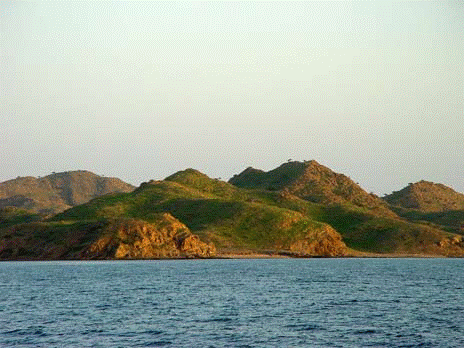
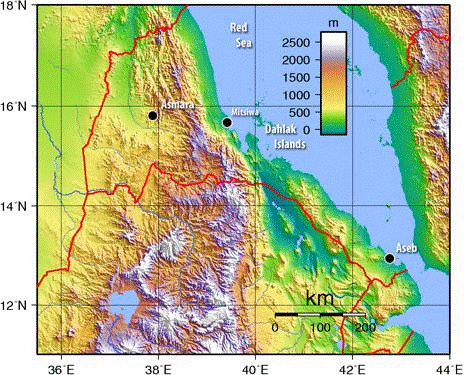
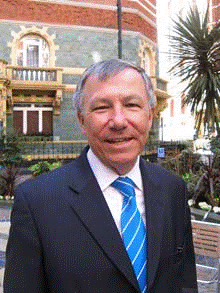
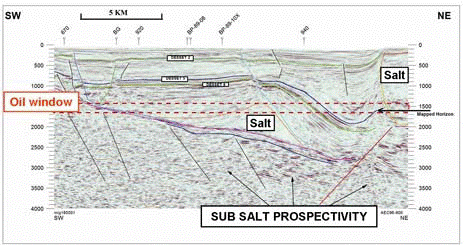
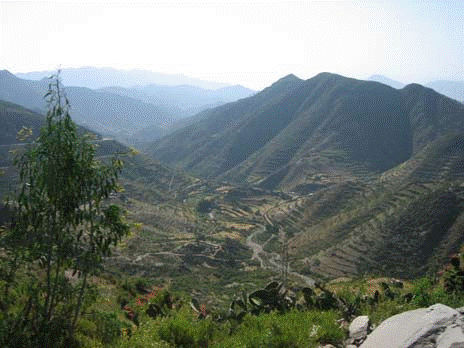
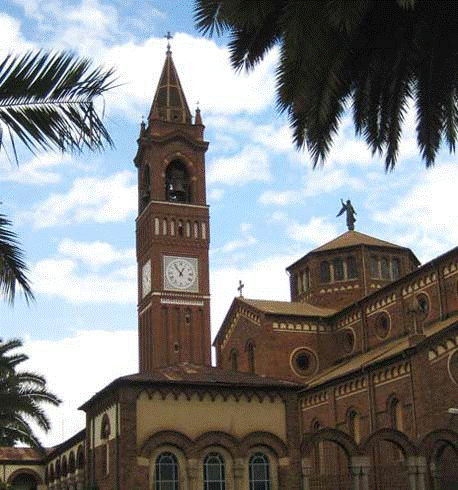
----[This List to be used for Eritrea Related News Only]----
